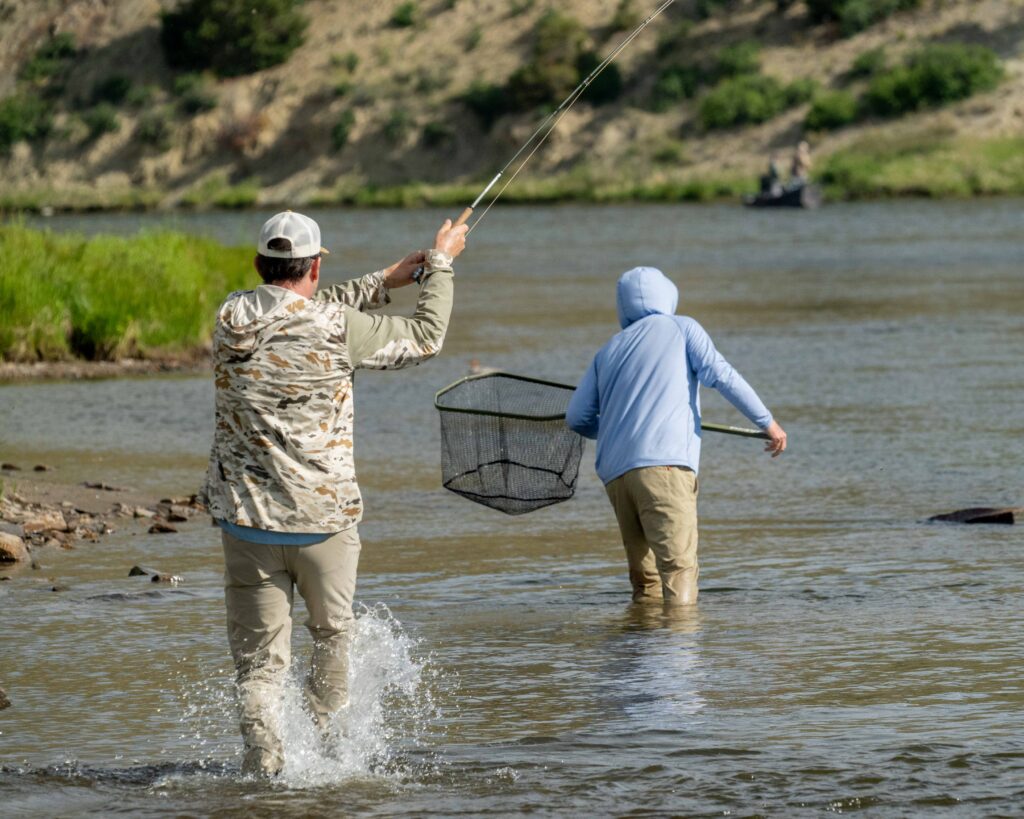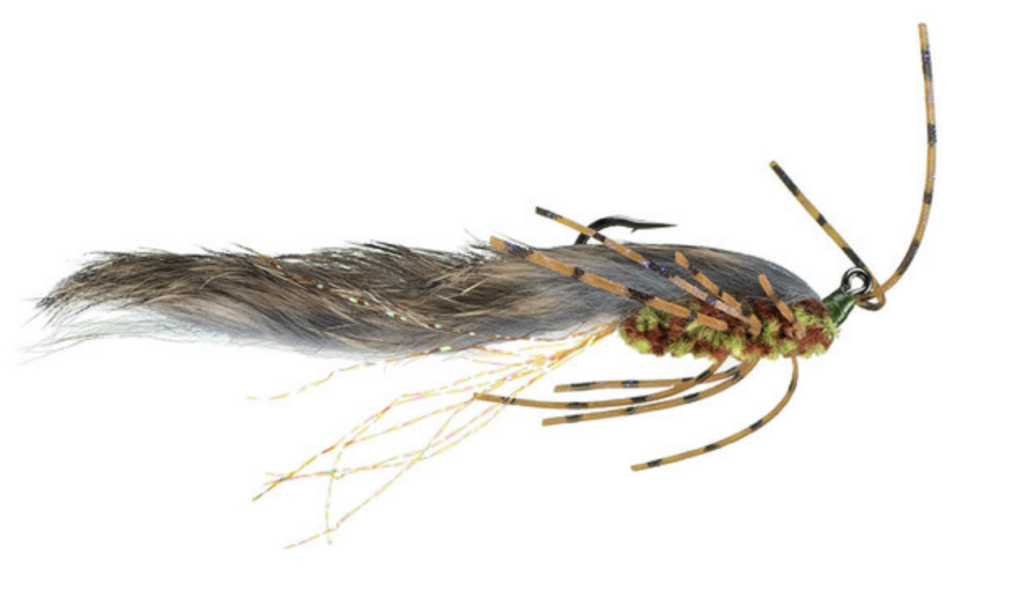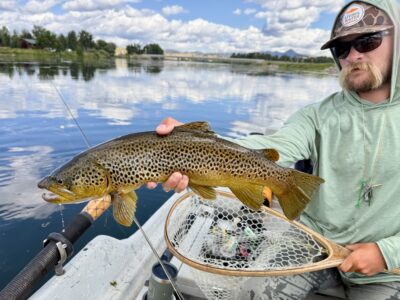Crayfish play a vital role in the Missouri River’s food web. As both predator and prey, they sit right in the middle of the aquatic hierarchy. These clawed crustaceans consume plant matter, insects, small fish, and even other crayfish. In doing so, they help regulate populations of other aquatic organisms, promoting balance and biodiversity throughout the river system. Beyond that, crayfish act as underwater janitors, cleaning up decaying organic material and contributing to water quality.
For Missouri River fly anglers, understanding the importance of crayfish can lead to better fishing and a deeper connection to the river. Crayfish patterns can be incredibly effective, especially when targeting large, opportunistic trout that love a meaty, slow-moving meal.

Crayfish Patterns for the Missouri River
From late spring through summer, crayfish become more active—and more vulnerable. This is when trout often key in on them, and anglers should follow suit. Crayfish are packed with protein and fats, making them a high-value target for predatory fish. Big browns and rainbows won’t hesitate to gobble up a vulnerable crayfish if the opportunity presents itself.
Two standout crayfish patterns on the Missouri River are the Zirdle Bug and the Clouser Cray. The Zirdle Bug is a clever mash up of the classic zonker and Pat’s Rubberlegs, delivering both natural movement and irresistible profile. It shines in shallow riffles and runs from Wolf Creek down to Pelican Point, where its lifelike motion and bulky silhouette draw aggressive strikes.
The Clouser Cray, with its dumbbell eyes and low-riding posture, is a mainstay on the Land of Giants section above Holter Lake. It imitates the scuttling crawl of a real crayfish hugging bottom structure. Exactly what big fish are used to seeing and eating.
When fishing these patterns, you have options. Dead-drifting under an indicator mimics a dislodged or injured crayfish. Adding subtle twitches or strips can simulate natural movement, enticing a chasing trout to commit. Either way, don’t be surprised if the takes are violent, trout don’t sip on crayfish, they crush them.

Crayfish Life Cycle
- Eggs: The crayfish life cycle begins when a female crayfish lays eggs. Juvenile crayfish eggs hatch into tiny larvae. The female carries them for a short time before releasing them into the water.
- Juvenile crayfish hatch from eggs.These larvae are small and are carried by the female for a brief period. Eventually, they are released into the water. The larvae then develop into juvenile crayfish that look like miniature versions of adult crayfish.
- Molting and Growth: Crayfish grow by molting—shedding their hard exoskeleton and forming a new, larger one. Juveniles molt frequently, while adults do so less often. You can often find molted shells along the riverbanks, a sign of a healthy crayfish population.
- Maturity: When the crayfish reach maturity, they begin to breed and lay eggs. The age at which crayfish reach maturity varies depending on the species and environmental factors such as temperature and food availability.
- Adult crayfish: Adult crayfish can live for several years, and during this time, they continue to molt and grow. They also reproduce and contribute to the next generation of crayfish.
As you can see crayfish play an essential role in the Missouri River ecosystem, particularly in the world of fly fishing. They are a vital food source for trout, and their importance cannot be overstated. If you are a Missouri River fly angler who doesn’t use crayfish patterns to target trout, your missing the boat.
So if you’re a Missouri River fly angler who hasn’t experimented with crayfish patterns, now’s the time. You might be missing some of the river’s biggest fish by ignoring one of its most important food sources.


 High Hopes, Low Preparation:
High Hopes, Low Preparation: 
Leave a Reply